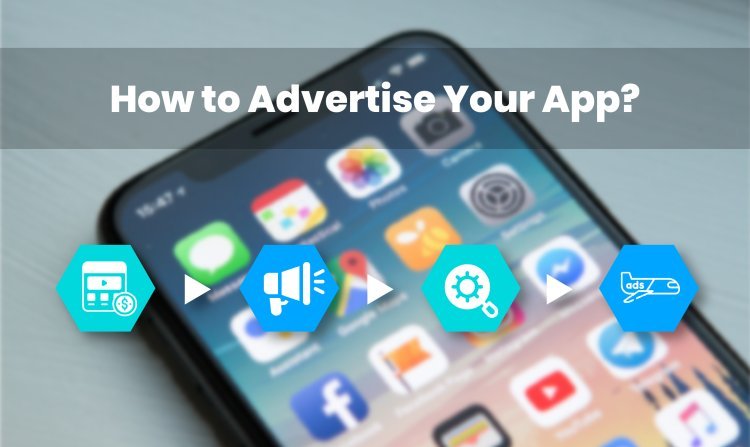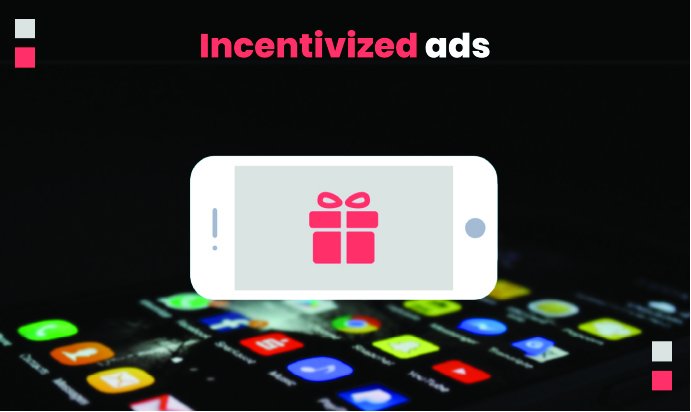
TABLE OF CONTENTS
With over four million apps available for download from the world's biggest app stores, businesses understand that a diligent marketing plan is the only way to stand out in today's app industry. While focusing on mobile app development and creating a functional app is important, your hard work will be for naught if users are unaware that the product exists.
From the moment a user learns about a product to the moment they become a committed user, mobile app marketing encompasses all of their interactions. Defining a target audience, knowing how to reach them, communicating with them, and evaluating their in-app activity to make continual changes as users travel through the acquisition funnel are all part of efficient mobile app marketing. Finally, the goal of a mobile app marketing plan should be to attract consumers who would not only engage with the product again, but also become dedicated advocates.
• Increase Organic Installs with App Store Optimization
Organic app installs are the main driving force when it comes to promoting your mobile app and growing your app business. Organic growth leaves opportunity for a steady flow of new users and most importantly, it doesn’t depend heavily on having a large budget.
• Promote Via Friends and Family
Take a look around and try to figure out who you're surrounded by. Is there anyone in your circle of friends or family who would appreciate using your app? If that's the case, go ahead and approach them! They're already a part of your inner circle and would gladly assist you.
• Run App Store Ads
Harmonize App Store Optimization with app store ads to promote your mobile app and catapult growth. Apple Search Ads and Google App Campaign are the two main platforms for app store ads. You can use both to launch app install campaigns and get more people to download your app.
· Paid Social Media to Promote Your Mobile App
App install campaigns are available on platforms like Facebook, Instagram, Snapchat, and TikTok. When people click the CTA (call-to-action) in your ad, they'll be taken straight to your app store listing. By using App Store Optimization to create an appealing app store listing, you can ensure that they actually download your app.
These campaigns are based on the demographics and interests of the target audience. Have a clear image of who your target audience is and what type of material they'd be interested in to receive the best ROAS (return-on-ad-sales). That way, you can target the proper folks and create an ad that will make them stop scrolling.
What is Mobile Advertising and its Types?
Consumers now have more alternatives when it comes to how they consume information thanks to modern technologies. People nowadays spend more time on their smartphones, tablets, and other mobile devices than they do watching television. This is due to the accessibility and inexpensive cost of these gadgets, as well as the availability of wireless connections that allow individuals to connect.
Mobile advertising is a type of internet advertising that focuses on users of smartphones and other mobile devices. This market is expected to increase in the near future on a global basis. Global mobile ads expenditure amounted to roughly 234 billion U.S. dollars in 2019.
Mobile advertising is often characterized as an advertisement that has been customized for mobile devices and is primarily geared at advertising across mobile devices such as smartphones, tablets, and wearable technologies. It is a subset of digital advertising. Despite the fact that mobile advertising is not a new advertising area, corporations are increasingly focused on it as consumers become more addicted to their devices. Marketers can diversify their advertising approach by combining mobile advertising with other digital advertising channels such as display, search, social, and video.
Banner ads

Banner advertisements are one of the oldest and most popular types of mobile advertising. They typically consist of an unobtrusive “banner” at the top or bottom of the screen with relevant text and visuals.
Native ads
Advertisements that use sponsored media or advertising that smoothly integrate with the app or the media format in which they appear are referred to as native ads. It seems like a part of the editorial flow of the page and follows the original app format for the best user experience.
Interstitial ads

Full-screen interactive ads that cover an app's UI are known as interstitial adverts. These adverts frequently display during natural transition periods, such as when halting a game or closing an app.
Rewarded videos
With customers increasingly seeking short bursts of information, video advertising is quickly becoming a top priority for marketers. The premise of video ads is easy, but the implementation is difficult. They're videos that start playing when a user opens or interacts with a mobile app. They necessitate a large expenditure yet provide a high level of consumer involvement.
Incentivized ads

A person who opts in to view a video or advertisement is rewarded with incentive advertising. These advertisements can be used in a game, on social media, or via a mobile shopping app. The strongest results come from reward-based adverts in entertainment, gaming, or shopping apps, where individuals spend a lot of time and the benefits are seen as generous.
Banner ads, Videos, Native ads, interstitial ad, incentivized ad, Rewarded videos)
Disadvantages of the Advertising
Advertising is described as a paid, non-personal type of communication about products or ideas via the mass media. This mass media is given by a relevant sponsor in order to inform, persuade, or influence the target audience's behavior.
The goal of advertising is to target a broad group of people rather than a single person. Due to which it is famous as a non-personal. Advertising is the dissemination of information about items or ideas.
It could tell us about the features of an iPod or a new smartphone, or it could remind us that we need to have a cancer check-up. Advertising has its own set of limits. In certain cases, few people abuse it by putting their personal interests ahead of their corporate goals.
Overdue Revenue Expenditure

Because the results are not immediate, it is overdue revenue expenditure. Because advertising is specifically for a significant amount of the total budget from an organization. As a result, investing a significant quantity in it does not always produce instant results, limiting its utility.
Barriers to Enter
Advertisements, to a greater or lesser extent, promote industry concentration. The degree of concentration varies depending on the nature of the individual trade.
Moreover, it also depends on the product's advertising ability, and the technical conditions under its production. However, research on the matter is inconclusive. The evidence for a beneficial relationship between advertising and concentration is not as strong as one might think.
Product Proliferation
Advertisement, according to critics, stimulates the spread of superfluous products. Because it results in the production of nearly identical products, resources that could otherwise be used to manufacture other products are wasted.
Leads to Falsehood in Business
Advertisements frequently mislead people and overestimate the benefits of products or their characteristics.
While it is true that some advertisements are false or fraudulent, this is not an advertisement disadvantage. It is the advertiser, not the advertiser, who is to blame.
Advantages of Advertising In-App Purchases:
From the perspective of various kinds of people involved, the numerous economic and social benefits of advertising can be categorized into several categories. Here are some advantages of advertising in business perspective;
Enhances Good-Will
Advertising plays an important role in boosting a company's reputation. It informs the public about the maker and his product. Repeated advertising and higher-quality items improve the manufacturer's reputation and boost the company's goodwill.
Educates the Consumers
Advertising is both informative and active. It acquaints clients with new products and their various applications, as well as educating them on new applications for old items.
Increased Sales

Advertisement makes mass manufacture of items easier and improves sales volume. In other words, sales can be boosted by increasing advertising spending, and selling expenditures will drop as sales increase.
Elimination of Middlemen
Its goal is to create a direct contact between the manufacturer and the customer, obviating the need for marketing intermediaries. This boosts the manufacturer's profits, while the consumer benefits from lower prices.
Understanding In-App Purchases & Special Considerations
Buying goods and services from within an app on a mobile device, such as a smartphone or tablet, is referred to as in-app purchase. Developers can provide their apps for free thanks to in-app purchases. Anyone who downloads the free version is then offered upgrades to the paid version, paid feature unlocks, exclusive things for sale, or even advertisements for other apps and services by the developer. This allows the developer to make money despite giving away the basic app for free.
In-app purchase enables app owners to upsell customers from within the app rather than through traditional marketing channels. For example, a game application may charge a fee to skip a particularly difficult level, or the owner may allow customers to view premium material behind a paywall.
Buying goods and services from within an app on a mobile device, such as a smartphone or tablet, is referred to as in-app purchase. Developers can provide their apps for free thanks to in-app purchases.
Unauthorized transactions can present security difficulties because in-app purchases are made through a mobile device.
Special Considerations
Users can download applications with in-app purchases via app shops like Google Play or iTunes, although these stores normally inform users that the app contains this functionality. Some companies have rules that allow refunds if they are requested within a certain amount of time after a purchase has been made. App shops frequently take a cut of in-app purchases.
· Criticism of In-App Purchasing
Unauthorized transactions can present security difficulties because in-app purchases are made through a mobile device. This is especially true if the login and password used in the app are weak, or if credit card information is kept in an unsecured manner in the app. Many apps will send you an email receipt after you make a purchase, allowing you to stop a fraudulent transaction.
· Preventing an Unauthorized In-App Purchase
Before making a purchase at the online store, Apple and Android smartphones require authentication. Additional purchases can be made for 15 to 30 minutes after this is entered without requiring authentication. Users can make many transactions during this period without noticing they are being charged.
Here are some suggestions for avoiding in-app purchases:
- · Be aware of the device's controls
- · Consider putting limitations in place (passcode, fingerprint lock, face recognition)
- · Downloading apps for parental control of smart gadgets is a good idea.
- · Use gift cards instead of credit cards to keep spending to a minimum.
Does Apple Charge for In-App Purchases?
Businesses can thrive due to online markets like Apple's App Store, which allow them to connect with large, global audiences. However, because these marketplaces are large enterprises, they must take a share of income from many of the other businesses that use their space in order to make a profit. It creates a perpetual tension: without the App Store, apps like Tinder and Candy Crush would not be nearly as popular as they are now, but they must pay Apple for that privilege on a regular basis.
A significant number of enterprises operate in app stores. App shops are the entryway to accessing consumers who shop on their phones and computers, whether they're selling jewelry or spending a lot of money on different ecommerce platforms. According to the Pew Research Center, almost 80% of Americans shop online, and more than half of those shoppers use a mobile device such as a phone or tablet.
What Percentage Does Apple Take from In-App Purchases?

Apple imposes a 30% fee for one-time purchases. Since 2016, Apple has cut subscription fees, but only after a 12-month period of service. Apple takes a 30% cut of your revenue in the first year of a subscription, so you only get 70% of the subscription price at each billing cycle, monthly or annual, minus relevant taxes.
After a year of service, your revenue share rises to 85% of the subscription fee, minus any taxes, with Apple taking 15% of your earnings. All Apple subscriptions, including those with paid promotional periods, are eligible (pay as you go, pay up front). Free trials and bonus periods are not included in the computation.
The one-year calculation is unaffected by upgrades, downgrades, or cross grades across subscriptions in the same group. The count of days is reset when you switch to a subscription in a different group.
How to Avoid Apple App Store Transaction Fees?
Only payments made through the iOS app are taxed by Apple. The most straightforward strategy to minimize fees is to avoid providing subscription services through the app. Netflix has been doing this since the year 2019. It takes consumers away from the app and links them to the company's website. Before using the app, users must first register and pay for the service on the website. Netflix isn't the only company that has tried to isolate Apple. Spotify, Valve, and the Financial Times have all attempted to replicate this.
Allowing Apple to keep 30% of your profits might not be such a bad idea. They aren't taking the money haphazardly. Developers gain various advantages by allowing Apple to host their apps. In addition to bringing significant traffic to your software, the App Store also adds credibility and a smooth purchase experience.
Conclusion
Advertising your app is not easy. However, if you follow the proper guidelines and rules of app stores, you will be able to do that easily. App development is one task but getting it prominent is only possible if you market and advertise it well. We hope now you understand how to nail it and improve your app ranking on Google and Apple app stores.











let’s get started!
Get in touch today. We’re ready!